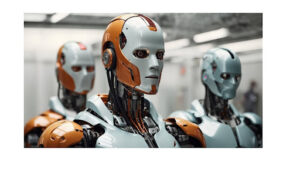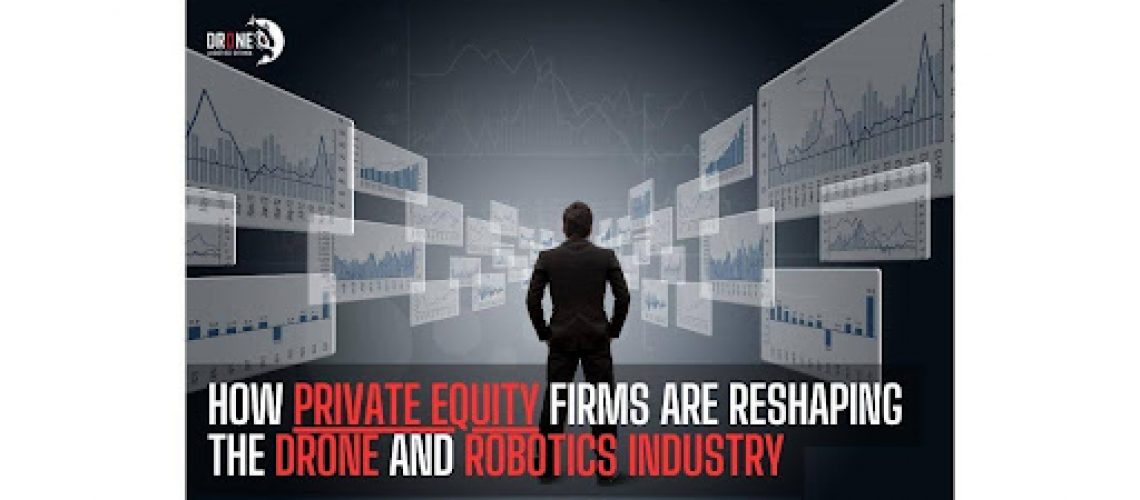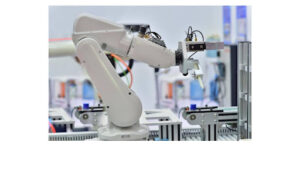How Private Equity Firms Are Reshaping the Drone And Robotics Industry
Private equity firms are pouring billions into drones and robotics, transforming industries from logistics to defense. Discover how investments in AI-powered drones, humanoid robots, and automation are reshaping the future.
Introduction
The small drone and robotics sector, once dominated by nimble startups and innovators, is undergoing a seismic shift. Private equity (PE) firms, armed with deep pockets and strategic expertise, are entering this high-growth space—bringing both opportunities and challenges. Here’s how their involvement is disrupting the landscape and what it means for small businesses.

The drone and robotics industry is undergoing a massive transformation, fueled by private equity (PE) and venture capital (VC) investments. With labor costs rising (up 4.5% in 2023 alone) and e-commerce booming, companies like Amazon and Tesla are doubling down on automation to save the cost of labor.
Robotics companies raised approximately $1.3 billion in July 2024. That figure is a result of 47 investments for producers of robots and robotics-enabling technologies. July’s total is slightly more than the 12-month trailing investments average of $1.2 billion.
Investments for the first seven months of 2024 equals approximately $9.7 billion. The $9.7 billion figure compares favorably to the January to July 2023 total funding amount of $8 billion. Robotics companies raised $2.7 billion in June 2024, but that number was inflated by two large investments raised by autonomous vehicle companies.
From AI-powered drones to warehouse robots, PE firms are betting big on this sector. In October 2024 alone, robotics startups raised over $7 billion in funding and the number keeps growing
In this blog post, we’ll explore:
Why private equity is flooding into drones and robotics
How the Involvement of PE is disrupting the industry
The biggest players and their investments
How AI is revolutionizing the industry
What the future holds for automation
Why Private Equity Is Betting Big on Drones and Robotics
Rising Labor Costs and Workforce Shortages
Labor costs increased by 4.5% in 2023, making automation a cost-effective alternative. Industries like warehousing, agriculture, and manufacturing are turning to robots to fill labor gaps.

Explosive Growth in E-Commerce
Companies like Amazon are investing heavily in warehouse robots to meet surging demand. Automated systems like Exotec’s Skypod (which raised $335M) streamline logistics, reducing delivery times.
Military and Defense Spending
Governments are pouring money into AI-powered drones for surveillance and combat. Anduril Industries, a defence startup, secured $1.48 billion in funding, boosting its valuation to $2 billion.
Advancements in AI and Machine Learning
Drones and robots are getting smarter. AI enables real-time decision-making, object recognition, and even autonomous flight. Startups like Performance Drone Works (which raised $16.39M) are leading the charge.
How the Involvement of PE is disrupting the industry
Fueling Hyper-Growth with Capital Infusion
Small drone and robotics companies often struggle to scale due to limited R&D budgets and production capacity. PE firms solve this by injecting capital, enabling portfolio companies to accelerate innovation, expand manufacturing, or enter new markets overnight. For example, a startup developing agricultural drones could suddenly compete for large government contracts or invest in AI-powered autonomy. While this turbocharges growth for some, it pressures independent businesses to keep pace or risk obsolescence.
Driving Mergers And Acquisitions
Small drone and robotics companies often struggle to scale due to limited R&D budgets and production capacity. PE firms solve this by injecting capital, enabling portfolio companies to accelerate innovation, expand manufacturing, or enter new markets overnight. For example, a startup developing agricultural drones could suddenly compete for large government contracts or invest in AI-powered autonomy. While this turbocharges growth for some, it pressures independent businesses to keep pace or risk obsolescence.
Operational Overhauls and Efficiency Gains
PE investors excel at optimizing operations. They might streamline supply chains, automate production, or implement data-driven management in portfolio companies. A small robotics manufacturer could see margins improve dramatically under PE guidance, but competitors without such resources may falter. This “efficiency gap” forces industry-wide adaptation, rewarding businesses that embrace lean practices and punishing those that can’t.
Expanding Market Reach and Vertical Integration
With PE backing, companies can aggressively expand into adjacent markets. A drone firm focused on construction might diversify into logistics, surveillance, or disaster response overnight. PE portfolios also benefit from vertical integration—e.g., acquiring a sensor manufacturer to control costs and IP. This broadens competition across sectors, challenging small players to defend their niches.
Talent Wars and Brain Drain
PE-backed firms often lure top talent with competitive salaries, equity incentives, and cutting-edge projects. For startups reliant on a handful of key engineers or AI specialists, losing talent to deep-pocketed rivals can be existential. The resulting “brain drain” stifles innovation at smaller scales, creating a talent monopoly for PE-funded giants.
Regulatory Leverage and Lobbying Power
As the industry consolidates, larger PE-backed entities can influence regulations. They may lobby for standards that favor their business models (e.g., stricter safety requirements that smaller firms can’t afford) or secure government partnerships. This creates a regulatory moat, further marginalizing independents.
The Double-Edged Sword of Profit vs. Innovation
While PE involvement brings resources, it also prioritizes ROI. Portfolio companies might cut long-term R&D to hit short-term targets, risking stagnation in a field driven by breakthroughs. Conversely, disciplined capital allocation could focus R&D on commercially viable projects, yielding faster real-world adoption. The tension between profit and innovation will shape the sector’s future.
Key Private Equity and Venture Capital Players
Here are the biggest investors shaping the drone and robotics landscape:

- Amazon Industrial Innovation Fund
Invested in Agility Robotics ($400M raised) for bipedal warehouse robots.
Backing AI-driven logistics automation for faster deliveries.
- Parkway Venture Capital
Funded Figure AI, a humanoid robotics startup addressing labor shortages.
- Goldman Sachs Asset Management
Led Exotec’s $335M Series D for warehouse automation robots.
- Valor Equity Partners & Founders Fund
Major backers of Anduril Industries, a defense drone company.
- Squadra Ventures
Invested $16.39M in Performance Drone Works for AI-powered drones.
Notable Drone and Robotics Startups Making Waves
Drone Companies
FlyGuys – Raised $3.26M to make aerial data more accessible.
Performance Drone Works – Secured $16.39M for autonomous military drones.
Echodyne – Raised $135M for radar systems in drones.
Robotics Companies
Agility Robotics – $400M raised for humanoid warehouse robots.
Apptronik – $403M Series A for next-gen humanoid robots.
Chef Robotics – $43.1M for AI-powered food service robots.
The Future of Drones and Robotics
- Commercial Drones Will dominate the commercial drone market is projected to grow at 32.6% CAGR, hitting $57 billion by 2030. The impact will be felt in the agriculture—Crop monitoring, pesticide spraying, Logistics–Last-mile delivery (Amazon, Walmart), and Construction & Mining—Surveying and inspections.
- Military Drones Are Evolving
Defense spending on AI-powered drones is surging. Companies like Anduril are developing autonomous combat systems.
- Humanoid Robots Enter the Workforce
Startups like Figure AI and Agility Robotics are building robots that work alongside humans in warehouses and factories.
- AI Will Supercharge Automation
Real-time decision-making in drones. Computer vision for object recognition.
Conclusion
Private equity firms are betting billions on drones and robotics, reshaping industries from logistics to defense. With AI advancements and labor shortages driving demand, this sector is set to explode.
Companies like Amazon, Tesla, and Goldman Sachs are leading the charge, funding innovations that will define the next decade of automation. Whether it’s delivery drones, warehouse robots, or military AI, one thing is clear: The future is robotic.
What do you think? Will robots replace human jobs, or will they create new opportunities? Which drone or robotics company are you most excited about? Let us know in the comments!



